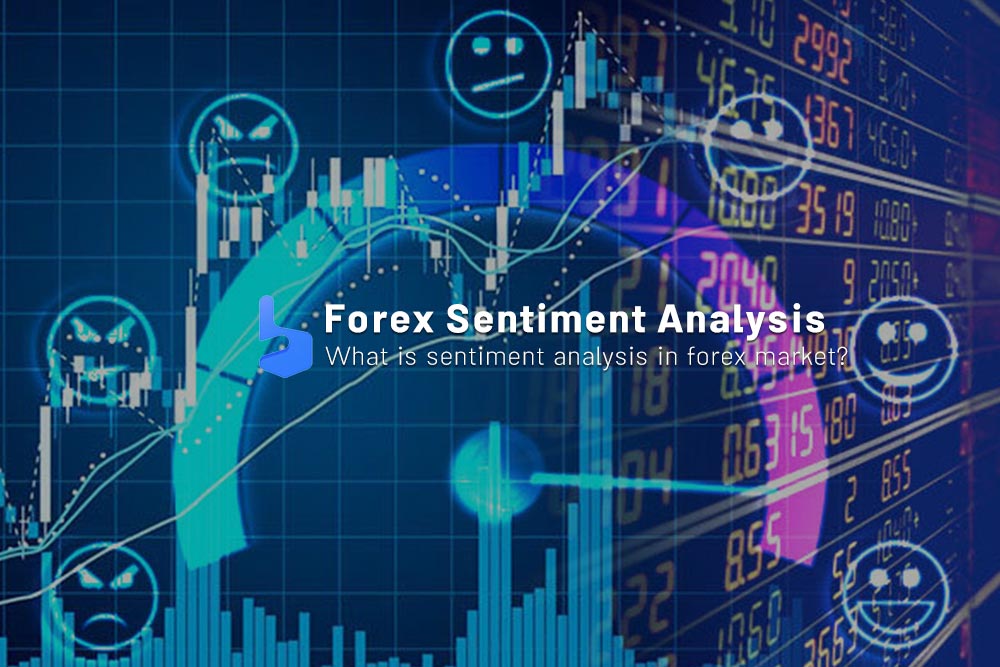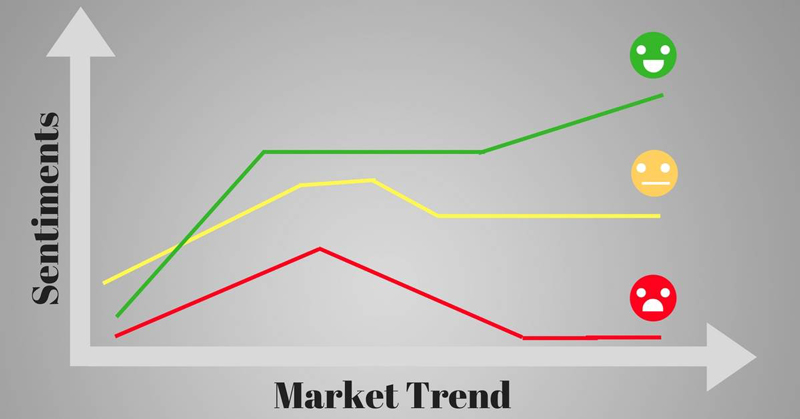What you are about to read:
Forex sentiment analysis is the process of using various tools and techniques to determine market emotions in the currency market. This method is a technical approach used to measure the level of positive or negative sentiments expressed in the market.
The goal of utilizing this information is to identify trading opportunities or risks. Here, Brokerland will discuss forex sentiment analysis, how it works, and its importance in trading.
Forex Sentiment Analysis – An Overview
Forex sentiment analysis is essentially the breakdown and analysis of market sentiments, meaning traders’ attitudes toward the market. This aspect can help traders understand whether the market is bullish or bearish, which is crucial as it can provide insights into the market’s mood and the direction it might take for traders. Various methods exist for conducting sentiment analysis, including using technical indicators, fundamental analysis, and social media analysis.
Technical Indicators in Sentiment Analysis
Technical indicators are tools used by traders to analyze price performance and identify trends in the forex market. Some popular technical indicators used in forex sentimental analysis include Moving Averages, Bollinger Bands, and the Relative Strength Index (RSI).
Moving Average or Moving Average is one of the most popular technical indicators used in forex trading. This indicator is essentially a line that represents the average price of a currency pair over a specific period and is used to identify trends in the market.
If the moving average is increasing, the market is considered bullish, and if it is decreasing, the market is considered bearish.
Bollinger Bands are another popular technical indicator used in forex trading, consisting of three lines: upper, middle, and lower bands. The upper band indicates an overbought level, and the lower band indicates an oversold level. The middle band represents the moving average. Bollinger Bands are used to identify fluctuations in the market.
The Relative Strength Index (RSI) is a momentum indicator used to measure the strength of a market trend. It is based on the ratio of average gains to average losses over a specific period. RSI ranges from 0 to 100. If RSI is above 70, the market is considered overbought, and if it is below 30, the market is considered oversold.
Fundamental Analysis
Fundamental analysis is the process of analyzing economic and financial data to determine the intrinsic value of an asset. This analysis is used to identify factors that may impact the value of money, such as interest rates, inflation, and gross domestic product growth.
Fundamental analysis can be used to determine the economic strength and potential direction of a currency. For example, if interest rates are high, it may attract foreign investors to invest in the country, increasing demand for the currency.
Social Media and Sentiment Analysis
Social media analysis is a technical technique used to measure the sentiments of traders and investors using social media platforms such as Twitter and Facebook. Traders and investors often express their opinions on these platforms, and their opinions can affect market sentiments and can be used in forex sentiment analysis.
Social media analysis can be used to measure the sentiments of traders and investors towards a specific currency pair. For example, if there is a lot of positive sentiment towards the USD/JPY pair, it may indicate an increase in the value of this pair.
Importance of Forex Sentiment Analysis
Forex sentiment analysis is an essential tool for traders as it can provide insights into the market sentiment and potential direction it may take. This method can help traders identify potential trading opportunities or risks and make informed decisions.
For example, if sentiment towards a specific currency pair is bullish, a trader may decide to buy the currency pair with the anticipation of its value increasing. Conversely, if sentiments are bearish for a currency pair, a trader might decide to sell the currency pair, anticipating a decrease in its value.
Additionally, sentiment analysis can be used for risk management in trades. If sentiments are bearish for a specific currency pair, a trader might decide to set a stop-loss order to limit their losses in case the value of the currency pair decreases.
Forex sentiment analysis can be used in conjunction with other technical and fundamental analysis tools to enhance the accuracy of trading decisions. For instance, a trader may use technical indicators to identify trends in the market and use forex sentiment analysis to confirm their trading decisions.
Advantages of Forex Sentiment Analysis
The primary advantage of using this method is that a trader can gain a better overall understanding of what the majority of market participants feel about a market. Understanding the actions or sentiments of the “crowd” likely influences the potential direction of a currency pair, leading to potential market trends or reversals.
Disadvantages of Forex Sentiment Analysis
Forex sentiment analysis also has its drawbacks that novice traders should be aware of. Like any other form of analysis, this method does not always provide 100% accurate signals. Perhaps its most significant drawback is that it can be very subjective, meaning one analyst may interpret emotional data differently from another.
Moreover, some sentiment indicators may be slow to react to political or economic news events, which is why most traders consider other forms of analysis to deal with sudden changes in market conditions.
Final Thoughts
Forex sentiment analysis is a vital tool for traders as it can provide insights into the market sentiment and potential directions it may take. This method involves analyzing various factors that may impact market sentiments, including economic data, technical indicators, news, and social media sentiments.
Using technical indicators to identify forex trends in the market, fundamental analysis to determine the intrinsic value of currency, and analyzing social media sentiments to measure traders’ and investors’ sentiments on specific currency pairs can help traders identify potential opportunities or risks. In this way, this method becomes a crucial tool for traders aiming to succeed in the forex market.










